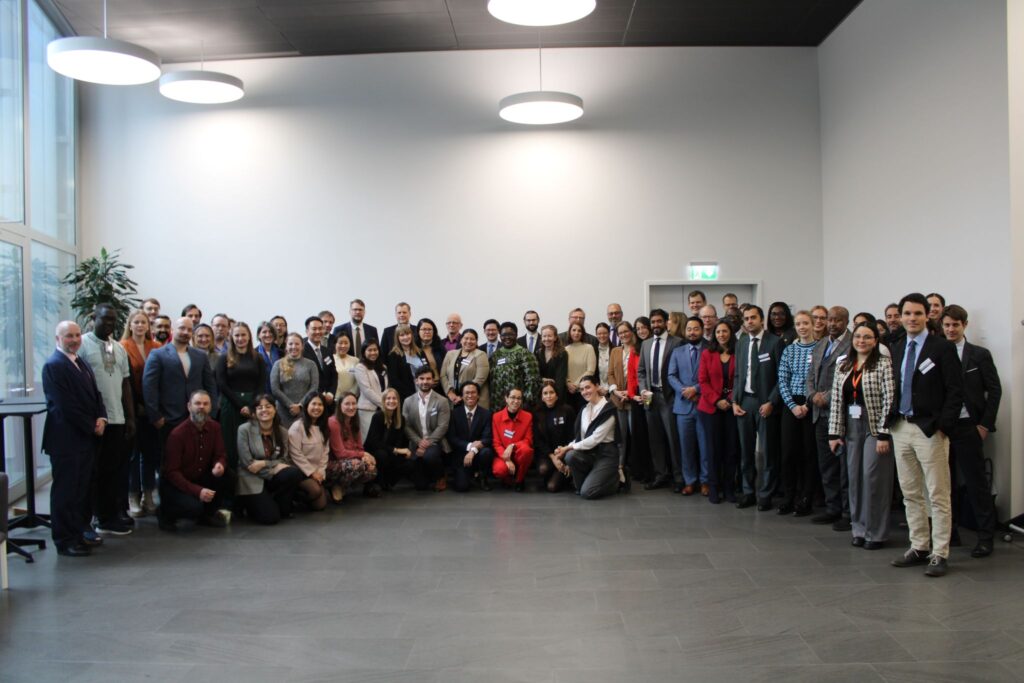From 6-8 November 2024, UNIDIR, Conflict Armament Research (CAR), the Peace Research Institute Oslo (PRIO) and the Violence & Impacts Early-Warning System (VIEWS) co-organized an innovative conference to craft strategies for strengthening the use of arms flows data in conflict early warning.
Armed conflicts are on the rise and have become more complex. They have devastating humanitarian impact and it can take societies decades to overcome their consequences. Conflict early warning efforts are key to prevent the outbreak, escalation and relapse of conflict, but they need to be equipped with relevant data to optimize their performance. While flows of conventional arms and ammunition can be one possible signal of future outbreak, escalations or relapses of armed conflict, the potential of data on such flows for conflict early warning remains underexplored.
“To do better in conflict prevention, we need to improve and think about innovative new tracks,” said Dr Robin Geiss, UNIDIR Director.
A joint approach to stronger conflict prevention
The conference Building bridges and incubating ideas for stronger conflict prevention: Harnessing arms and ammunition flows data for early warning initiated an innovative new journey to address this gap. It brought together over 50 leading experts from academia, the United Nations, international and regional organizations, and civil society.
“This was the first time that arms flows monitoring and conflict early warning experts have engaged in such a dedicated dialogue,” said Himayu Shiotani, CAR’s Director for Policy and Research.
The three-day conference enhanced knowledge on what traditional and computational approaches to conflict early warning entail and fostered a shared understanding amongst participants of the relevance, potential and limitations of arms and ammunition flow data for these purposes. It laid the foundation to build bridges between conflict early warning and arms flow monitoring experts from science, policymaking and implementation on the ground – nurturing an interdisciplinary community of practice.
“This week, we have explored and identified innovative pathways to improve the utility of arms and ammunition flows data in both traditional and computational conflict early warning. Discussions underscored the importance of harnessing existing data effectively and prioritizing practical, impact-driven solutions and partnerships to address current gaps and challenges,” said Prof. Havard Hegre, VIEWS Director and Research Professor at PRIO.
Exploring the broader political landscape
The conference also facilitated a high-level discussion on conflict prevention, early warning and arms control in today’s and tomorrow’s peace and security landscape. The panel, which brought together the two expert communities and Geneva-based diplomats, included insights from:
- Mélanie Régimbal, Chief of Service, UNODA Geneva
- Dr Adam Day, Head of the Geneva Office, UNU’s Centre for Policy Research
- Levinia Addae-Mensah, Executive Director, West Africa Network for Peacebuilding
- Miriam Bensky, Political Affairs Officers, UNDPPA
Inspired by the conference discussions, the panelists shared reflections on how to implement the Pact for the Future and the New Agenda for Peace, highlighting the need for a prevention shift and strengthening the role of arms control in it. Their interventions underlined the importance of concretizing political deeds on the ground, rebuilding trust, prioritizing national and local action, and pursuing comprehensive and multistakeholder approaches that embrace emerging technologies for conflict prevention. The panel was followed by a summary of the key findings from the conference, outlining the shared path forward for more effective conflict early warning and early action.
Based on the conference outcomes, UNIDIR and its partners look forward to continuing the journey initiated with this conference aimed at fostering actions to enhance utility of arms and ammunition flows data in conflict early warning.
